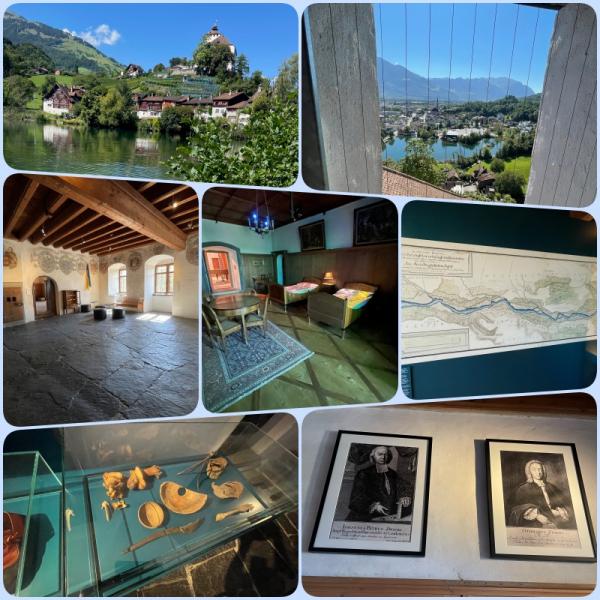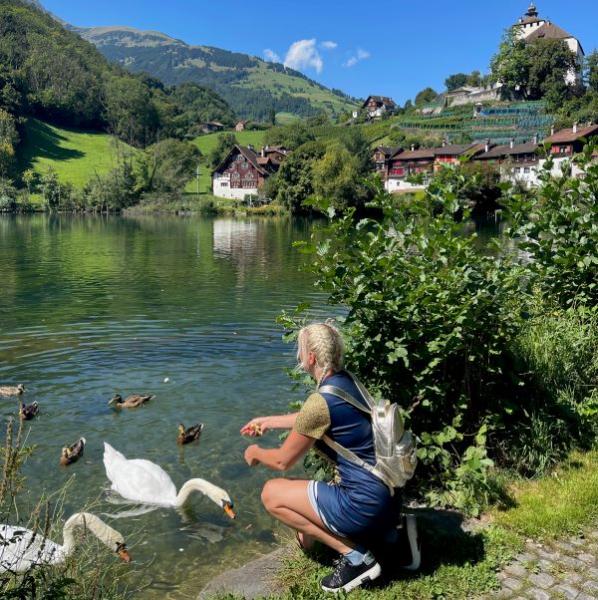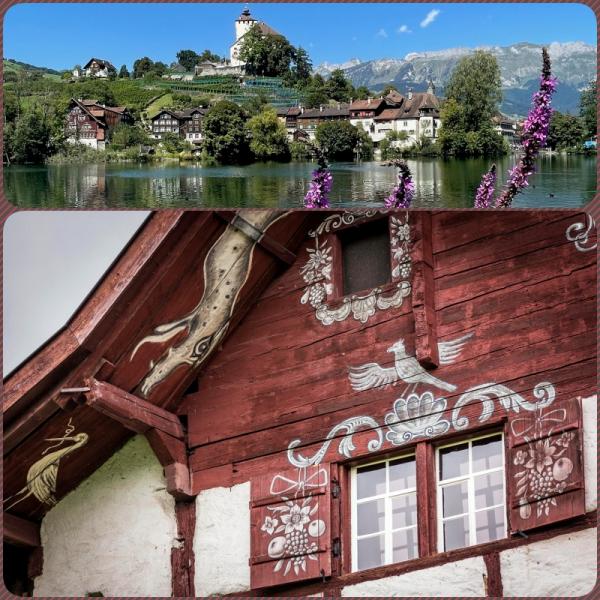Snakes. Dragons and the Phoenixes - Switzerland
Alion Institute Educational Report: Werdenberg's Symbols of Renewal
Alion Institute Mission: Connecting historical wisdom with contemporary learning
We explore 800 years of history in a unique historic setting. Werdenberg is one of the few surviving urban ensembles of medieval timber buildings in Europe and has been placed on Switzerland's register of heritage sites of national significance.
The exhibitions in the Museums of Werdenberg tell the story of the rulers in the castle and the ordinary people in the small town, known as the Städtli.
We explore 800 years of history in a unique historic setting. Werdenberg is one of the few surviving urban ensembles of medieval timber buildings in Europe and has been placed on Switzerland's register of heritage sites of national significance.
The exhibitions in the Museums of Werdenberg tell the story of the rulers in the castle and the ordinary people in the small town, known as the Städtli.

Field Study Overview:
Date and Location: August 16, 2022, Werdenberg, Switzerland
Research Team: Alion Institute Cultural Heritage Division (Knight's Order of St. George)
Lead Researcher: Tyasha A.
Focus: Medieval symbolism and ecological wisdom
Historical Context:
Heritage Significance: 800 years of documented history
UNESCO Status: Switzerland's register of heritage sites of national significance
Architectural Rarity: One of Europe's few surviving medieval timber building ensembles
Key Educational Findings and the Wisdom of Ancient Symbols:
The Werdenberg Schlangenhaus (Serpent House) reveals profound wisdom through its ceiling artwork. Snakes, dragons, and phoenixes represent eternal renewal - a timeless truth that connects medieval understanding.
Date and Location: August 16, 2022, Werdenberg, Switzerland
Research Team: Alion Institute Cultural Heritage Division (Knight's Order of St. George)
Lead Researcher: Tyasha A.
Focus: Medieval symbolism and ecological wisdom
Historical Context:
Heritage Significance: 800 years of documented history
UNESCO Status: Switzerland's register of heritage sites of national significance
Architectural Rarity: One of Europe's few surviving medieval timber building ensembles
Key Educational Findings and the Wisdom of Ancient Symbols:
The Werdenberg Schlangenhaus (Serpent House) reveals profound wisdom through its ceiling artwork. Snakes, dragons, and phoenixes represent eternal renewal - a timeless truth that connects medieval understanding.
Ancient Wisdom & Cultural Intelligence from the Past
Snakes: Symbolize transformation and rebirth through shedding skin
Dragons: Represent powerful natural forces and protection
Phoenixes: Embody resurrection and hope through adversity
In the 18th century, natural scientists' documentation from Zurich preserved local folk tales, demonstrating how traditional stories carry environmental wisdom across generations. These narratives weren't mere entertainment - they encoded practical knowledge about natural cycles.
Educational Insight: Folk tales serve as cultural DNA, preserving essential knowledge for future generations.
The Eternal Cycle Principle - Medieval facade decorations weren't decorative accidents. The snake and phoenix motifs symbolized hope for plentiful harvests and prosperity by honoring nature's renewal cycles.
Modern Application - Understanding cyclical thinking helps us approach challenges with patience and a long-term perspective.
Dragons: Represent powerful natural forces and protection
Phoenixes: Embody resurrection and hope through adversity
In the 18th century, natural scientists' documentation from Zurich preserved local folk tales, demonstrating how traditional stories carry environmental wisdom across generations. These narratives weren't mere entertainment - they encoded practical knowledge about natural cycles.
Educational Insight: Folk tales serve as cultural DNA, preserving essential knowledge for future generations.
The Eternal Cycle Principle - Medieval facade decorations weren't decorative accidents. The snake and phoenix motifs symbolized hope for plentiful harvests and prosperity by honoring nature's renewal cycles.
Modern Application - Understanding cyclical thinking helps us approach challenges with patience and a long-term perspective.

Living Ecosystem Lessons

Lake Werdenberg Today
The castle's lakefront location offers practical wisdom about coexistence:
- Ducks, swans, and coots demonstrate peaceful species diversity
- Fish eagerly accepting offerings show nature's receptivity to human kindness
- Former fortified walls now nurture life, a transformation from defense to harmony
Tyasha's Observation: "The hungry lake inhabitants are accepting the offerings, reminding us that generosity creates connection across species boundaries."
The castle's lakefront location offers practical wisdom about coexistence:
- Ducks, swans, and coots demonstrate peaceful species diversity
- Fish eagerly accepting offerings show nature's receptivity to human kindness
- Former fortified walls now nurture life, a transformation from defense to harmony
Tyasha's Observation: "The hungry lake inhabitants are accepting the offerings, reminding us that generosity creates connection across species boundaries."
Like the painted serpents, we must shed old patterns that no longer serve our growth. Medieval farmers understood seasonal wisdom. Modern life benefits from respecting natural rhythms rather than forcing constant acceleration. The unknown artists teach us that lasting impact comes from meaningful work, not personal fame.
Conclusion:
The serpents, dragons, and phoenixes of Werdenberg offer more than historical curiosity. They provide practical wisdom for navigating modern challenges: embrace change, honor natural cycles, contribute meaningfully without ego, and transform rather than destroy. This educational report emphasizes the deeper meanings behind the historical symbols, showing how ancient wisdom about renewal, cycles, and transformation remains relevant today.
Final Wisdom from Tyasha: "In feeding the lake fish, we participated in the same cycle of giving that these medieval symbols celebrated - proof that some truths transcend centuries. Ancient symbols become living teachers when we understand their deeper meaning.
Alion Institute Recommendations:
- Use historical symbols to teach ecological thinking
- Connect ancient wisdom with contemporary environmental challenges
- Emphasize cyclical rather than linear problem-solving approaches
- Document folk wisdom before it disappears
- Recognize unnamed contributors to cultural heritage
- Connect historical sites with modern environmental education
Final Wisdom from Tyasha: "In feeding the lake fish, we participated in the same cycle of giving that these medieval symbols celebrated - proof that some truths transcend centuries. Ancient symbols become living teachers when we understand their deeper meaning.
Alion Institute Recommendations:
- Use historical symbols to teach ecological thinking
- Connect ancient wisdom with contemporary environmental challenges
- Emphasize cyclical rather than linear problem-solving approaches
- Document folk wisdom before it disappears
- Recognize unnamed contributors to cultural heritage
- Connect historical sites with modern environmental education

